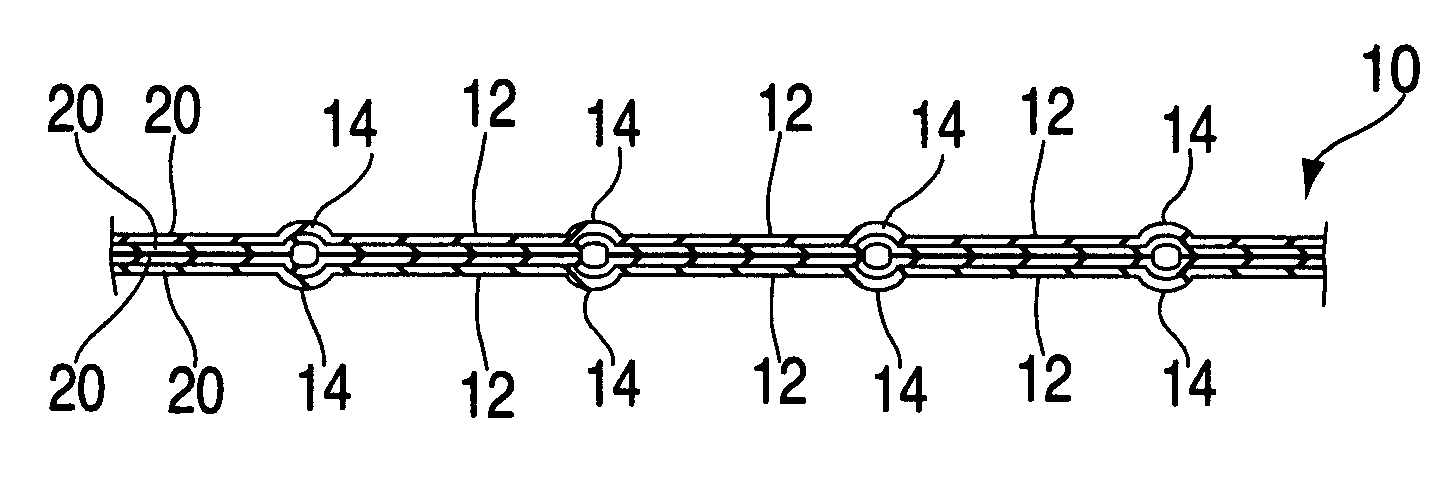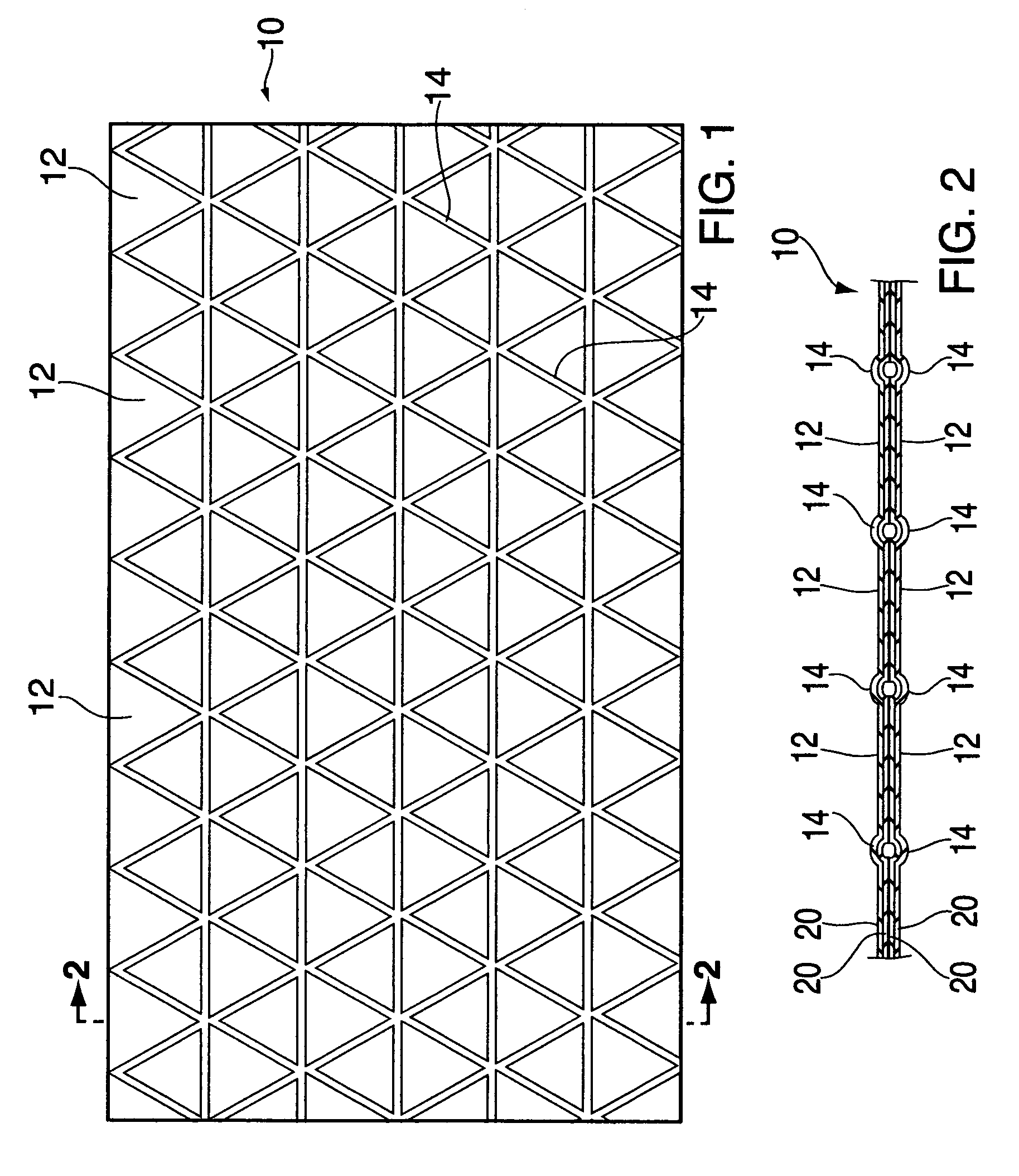Fragment and stab resistant flexible material with reduced trauma effect
a flexible material, stab-resistant technology, applied in the field of composite materials, can solve the problems of insufficient resistance to knife stabs, ice pick stabs, and rigid body armor garments (e.g. vests) are less comfortable to wear than flexible body armor garments, and achieve excellent ballistic protection, reduce trauma, and resist stabs.
- Summary
- Abstract
- Description
- Claims
- Application Information
AI Technical Summary
Benefits of technology
Problems solved by technology
Method used
Image
Examples
example 1
[0078]A composite was formed from a structure which included layers of unidirectionally oriented extended-chain polyethylene fibers. The composite was formed from 37 layers of SPECTRA SHIELD® PCR, which is a non-woven fabric of two SPECTRA® extended-chain polyethylene fiber non-woven tapes including a resin, which tapes are cross-plied at 0° / 90°. The layers of SPECTRA SHIELD® PCR were stacked together and films of linear low density polyethylene having a thickness of 0.35 mils (8.75 μm) were placed on the top and bottom of the stack. Samples of the multilayered structure measuring 12×12 inches (30.5×30.5 cm), having an a real density of 1.02 psf (5.00 kg / m2), were placed in a hydraulic press, the top and bottom molds of which (each measuring 15×15 inches (38.1×38.1 cm)) were formed with a design of equilateral triangles attached to each other, similar to that shown in FIG. 1. The mold was formed from aluminum plates, with grooves measuring 4 mm wide and 5 mm deep having been cut the...
examples 2 and 3 (comparative)
[0084]In Example 2, Example 1 was repeated with an equivalent number of loose (unconsolidated) PCR sheets. It was determined that the V50 was 1675 fps (511 mps).
[0085]In Example 3, Example 1 was repeated with an equivalent number of consolidated SPECTRA SHIELD® PCR sheets. It was determined that that V50 was 1815 fps (553 mps).
[0086]When comparing the results from Example 1 and Examples 2 and 3, it can be seen that the velocity in the crest areas was similar to the V50 measurement for the unconsolidated PCR material, and that the velocity in the trough areas was similar to the V50 measurement for the consolidated PCR sheets. The material of this invention thus has the excellent ballistic resistance of a rigid material but is flexible.
example 4
[0087]Samples prepared in the manner of Example 1 are tested for knife stab and ice pick protection in accordance with the NIJ Stab Resistance of Personal Body Armor test standard NIJ-STD-0115.00.
[0088]The panels are found to pass both the ice pick and knife-blade stab resistance tests.
[0089]It can be seen that the present invention provides flexible composites which have the ballistic resistant properties of rigid materials. The composites and body armor formed therefrom are resistant to ballistic projectiles, as well as knife stabs and ice pick stabs. The composites of this invention provides ballistic resistance with reduced trauma to the wearer and are easy to manufacture.
PUM
| Property | Measurement | Unit |
|---|---|---|
| melting point | aaaaa | aaaaa |
| melting point | aaaaa | aaaaa |
| thickness | aaaaa | aaaaa |
Abstract
Description
Claims
Application Information
 Login to View More
Login to View More - R&D
- Intellectual Property
- Life Sciences
- Materials
- Tech Scout
- Unparalleled Data Quality
- Higher Quality Content
- 60% Fewer Hallucinations
Browse by: Latest US Patents, China's latest patents, Technical Efficacy Thesaurus, Application Domain, Technology Topic, Popular Technical Reports.
© 2025 PatSnap. All rights reserved.Legal|Privacy policy|Modern Slavery Act Transparency Statement|Sitemap|About US| Contact US: help@patsnap.com


